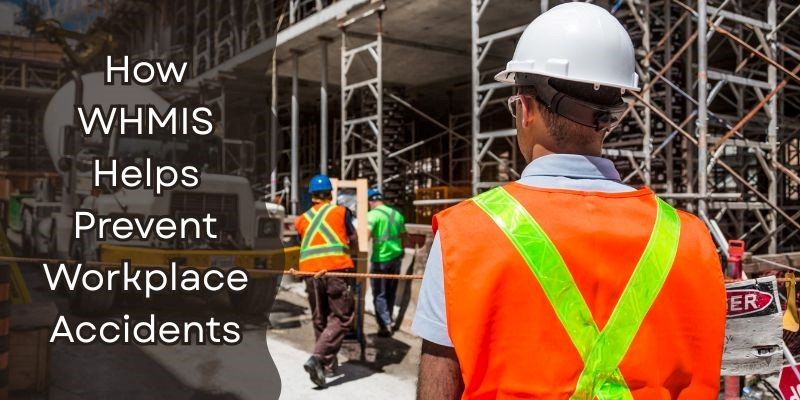
It’s easy to forget how often we work around products that can cause real harm if handled the wrong way.
Things like cleaning sprays, glues, or paints may seem harmless, but they can cause injuries, fires, or health issues when used without caution.
That’s where WHMIS comes in. It’s a system used across Canada that helps workers understand how to handle hazardous products safely and prevent accidents.
In this post, we’ll look at how WHMIS helps reduce risks at work by improving awareness, training, and access to key safety information.
WHMIS stands for Workplace Hazardous Materials Information System. It's Canada’s national system for managing dangerous products at work.
The goal is simple: help workers understand how to handle, store, and use hazardous materials safely.
It’s not optional. WHMIS is backed by law under the Hazardous Products Act and is regulated by Health Canada.
In 2015, WHMIS was updated to match the Globally Harmonized System (GHS), making its labels and data sheets easier to understand worldwide.
Whether you work in an office, a warehouse, a hospital, or on a construction site, WHMIS likely applies to your job.
It’s built to protect workers in any sector where chemicals or hazardous products are used—even in small amounts.
Some of the most common workplace injuries come from everyday hazardous products.
Chemical burns, skin rashes, breathing problems, fires, and spills happen more often than people think.
These accidents don’t always involve big industrial chemicals. Even basic cleaners or solvents can cause harm when misused.
Most of these incidents can be avoided with better awareness, proper labels, and access to safety info.
Here are a few examples of how accidents happen:
● A worker opens an unlabelled bottle and gets splashed in the face with a corrosive.
● Two cleaning agents are mixed, creating toxic fumes that trigger a workplace evacuation.
● A flammable product is stored near a heat source, leading to a fire.
● A worker sprays an aerosol in a closed space and gets dizzy due to poor ventilation.
● Gloves aren't worn when handling a strong acid, causing a skin reaction.
These are preventable. That’s why WHMIS exists—to help workers recognize these risks before something goes wrong.
WHMIS gives workers the tools to stay safe—from understanding labels to responding to chemical risks. Here’s how it helps reduce accidents on the job.
WHMIS labels use simple pictograms that make it easy to spot dangers at a glance.
Symbols like a flame, skull, or corrosive icon warn you about fire risks, poison, or skin damage.
Clear labelling helps workers know what they’re dealing with before they open, pour, or use anything.
It also helps prevent mix-ups, like confusing a flammable cleaner with a harmless one.
Both supplier and workplace labels are required to give key info in case of an emergency.
An SDS tells you how to safely handle a product, what to do if there’s a spill, and how to store it properly.
It includes first aid instructions, the type of PPE you should wear, and what to avoid.
If someone gets hurt or there's a chemical reaction, having quick access to the SDS can make a big difference.
WHMIS requires employers to keep SDSs available for every hazardous product on-site.
Workers should know where to find them and be trained to use them when needed.
WHMIS training isn’t just reading a manual—it shows you how to spot risks and handle materials safely.
Good training includes real examples, practical tips, and scenarios you might face in your job.
It helps workers know what labels mean, when to use gloves or goggles, and where to find safety info.
This kind of learning builds confidence and helps people make safer choices every day.
Employers must make sure workers are trained when they’re hired and whenever hazards change.
WHMIS only works when everyone does their part. Here’s how employers, workers, and suppliers each help keep the workplace safe.
They’re in charge of setting up and maintaining a WHMIS program at the workplace.
That includes making sure products are labelled, SDSs are available, and workers are trained.
Good employers also update training if a new hazard or product is introduced.
Workers must take part in WHMIS training and apply what they learn.
They should check labels, read SDSs, and wear the right protective gear.
If a label is missing or unreadable, it’s their job to report it.
Suppliers (including manufacturers and importers) must classify hazardous products and label them correctly.
They’re also responsible for providing up-to-date SDSs to anyone who buys or uses their products.
This is the first step in making sure information flows safely to the workplace.
Avoiding accidents isn't about luck—it’s about habits. These small steps help you stay safe and WHMIS-compliant every day.
Training isn’t a one-time thing. It should happen at least once a year or whenever new hazards show up.
Most WHMIS online certification programs are quick, affordable, and available anytime—making it easy to stay compliant.
Before using any product, take a quick look at the label—even if you’ve used it before.
Keep printed SDSs nearby or save links to them digitally so they’re easy to find when needed.
If something looks off—like a damaged label or a leaking bottle—say something right away.
Even small issues or near-misses can turn serious if ignored.
Speaking up protects everyone around you, not just yourself.
WHMIS isn’t just paperwork—it’s a system that helps prevent injuries and protect lives.
Whether you work in a high-risk job or not, taking it seriously matters.
If it’s been a while since your last training, now’s a good time to refresh it. It could make all the difference.